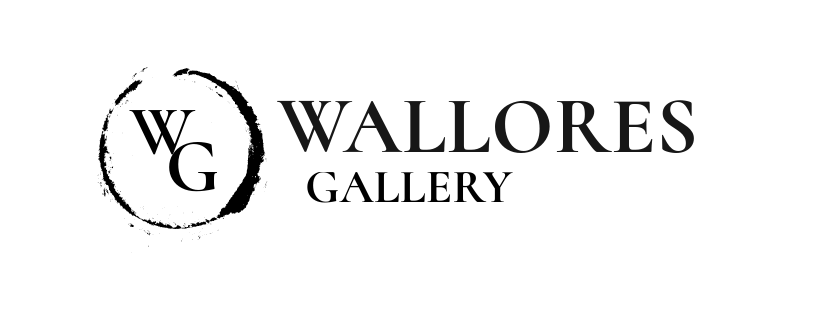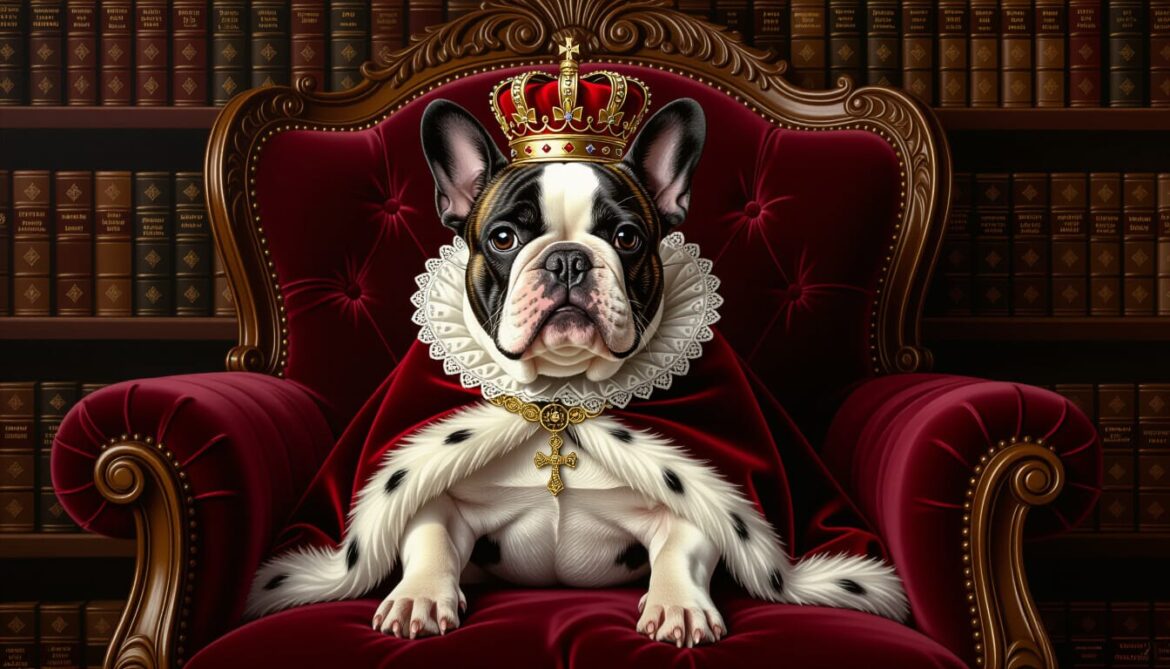The French Bulldog portrait was the smallest of them all — only twelve inches high, its frame gilded in delicate floral motifs, more jewelry than art. It hung beside the servants’ entrance, half hidden behind a curtain of dust and cobwebs, as if it didn’t want to be seen.
The subject, however, was impossible to ignore once found. The little dog sat upright on a grand settee; the light spilled across his coat in pale amber tones. His head tilted slightly, ears sharp, eyes full of alert curiosity. He wore a velvety cloak, a crown and a small silk ribbon tied neatly at the neck.
The plaque beneath read:
“Beau.”
No one knew who Beau had belonged to. The records had gaps — entire pages missing from the Whittemore family register during the years the portrait was likely painted. The date on the back of the canvas was smudged, the signature half-removed.
What the house staff did know was this: every time the moonlight reached that corridor, the faint sound of nails on wood echoed through the hall. Not frantic scratching — a rhythmic, gentle patter, as though something small was walking just out of sight.
One winter evening, the caretaker, a quiet man named Simon, found the frame slightly askew. Thinking it had loosened, he reached to straighten it — and froze. The ribbon around Beau’s painted neck was no longer blue. It was red.
He told no one.
Over the next few weeks, Simon began noticing other changes. A faint pawprint in the dust near the back stairs. The smell of fresh paint in rooms untouched for years. And one night, when he passed the French Bulldog’s portrait after midnight, he heard a whisper — not a voice exactly, but the sound of breathing from within the wall.
That was the same week the curator found the note beneath Bartholomew’s portrait: Four still wait. Two yet to come.
Simon hadn’t known what it meant then, but when the ribbon turned red again — darker this time, as though soaked — he began counting.
Sir Reginald. Captain. Harper. Bartholomew. That made four. Beau was fifth. One yet to come.
He pulled the painting from the wall the next morning. Behind it, the plaster had cracked in a perfect circle, and beneath that, a hollow cavity large enough to fit something small. Inside lay a folded scrap of linen and, resting on it, a key. Its handle was shaped like a dog’s head.
When he touched it, the piano upstairs began to play. Not the nocturne this time — something new. A brighter melody, unfinished, hesitating between major and minor.
Simon turned toward the stairs.
And as he climbed, every portrait in the house seemed to exhale, their painted eyes glinting in the half-light, as though the house itself was waiting for him to unlock the final door.

